
My new school lab on energy in the climate system has been launched! :-)
Today was a very exciting day: We launched my new school lab on energy in the climate system! The “energie:labor” is finally up and running again!
Let me walk you through some of the stuff that is going on in the lab.
Below, you see Mirko, who leads the station on the hydrological cycle, and his group working on an experiment.
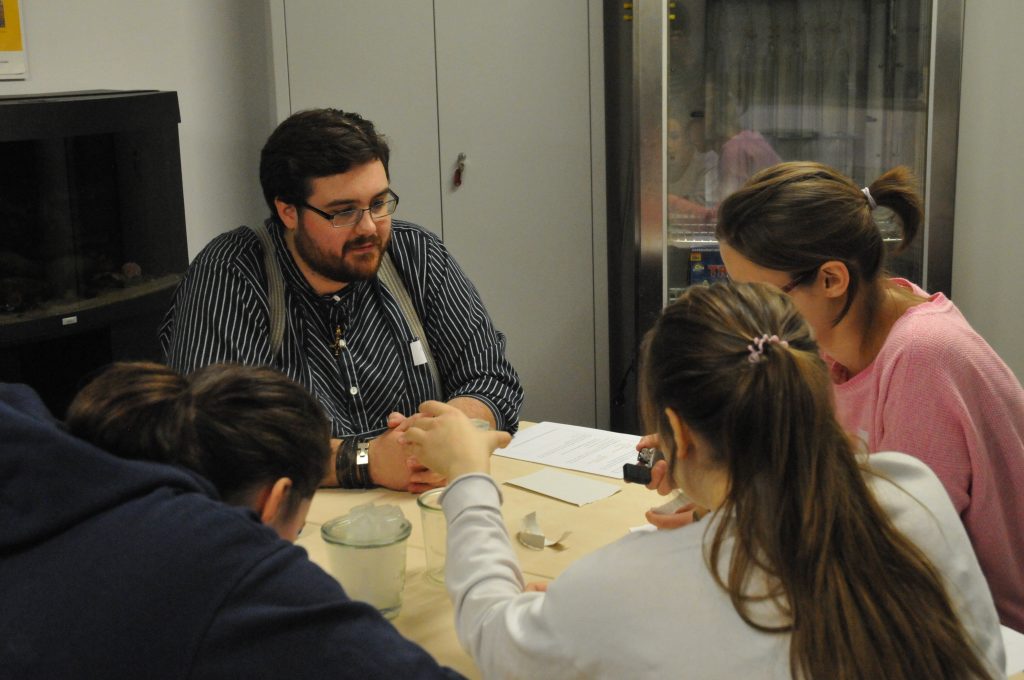
In the left jar, you see how much smoke a burning piece of paper makes. The students tried this in order to compare it with the jar on the right. Because what they see in there is not just smoke from a burning piece of paper, it’s steam from the hot water at the bottom of the jar — a cloud in the jar! And the burning paper was just added to provide aerosols as condensation nuclei for the clouds.

Another part of the energy puzzle of the hydrological cycle: How much do raindrops falling down on the ground actually heat up the ground? The students are looking at the wooden board on the floor, using a thermal imaging camera. They won’t see a lot when the bouncing ball hits, but they saw a clear signal with the heavy metal ball they used earlier! Kinda like what we did at the European Researcher’s Night (see here).
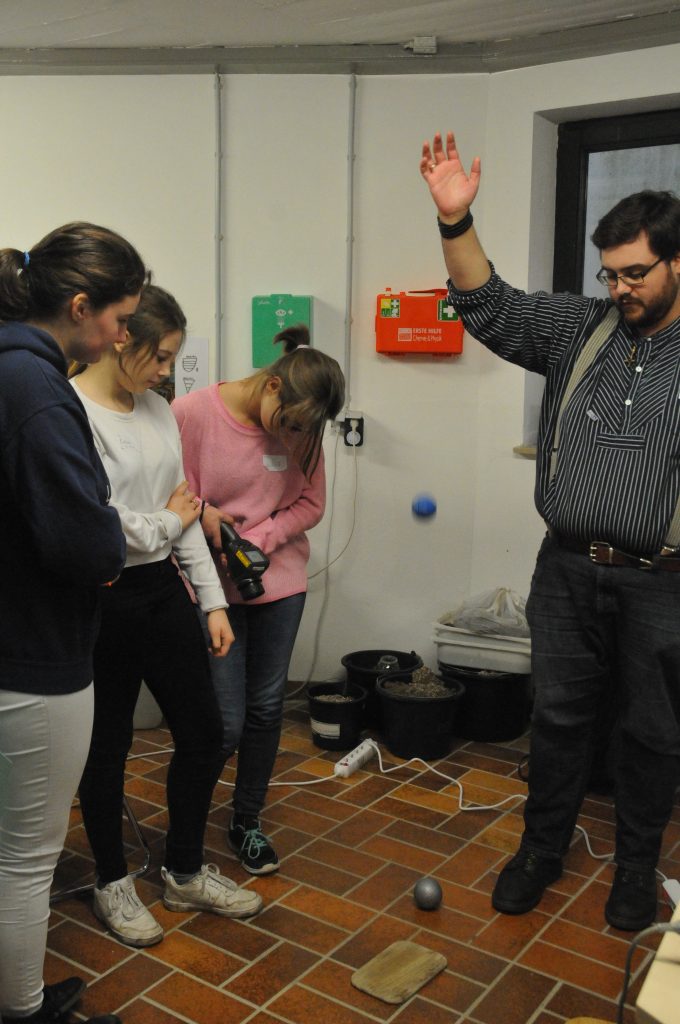
Now, they are documenting their observations.

And later, they are running an experiment looking at how much moist vs dry air heats up in that insulated container below the lamp to explore the greenhouse effect of water vapour. The setup of this experiment was developed by Julian who is leading a different station on CO2 in the atmosphere, but sadly I don’t have any good pictures of that station!
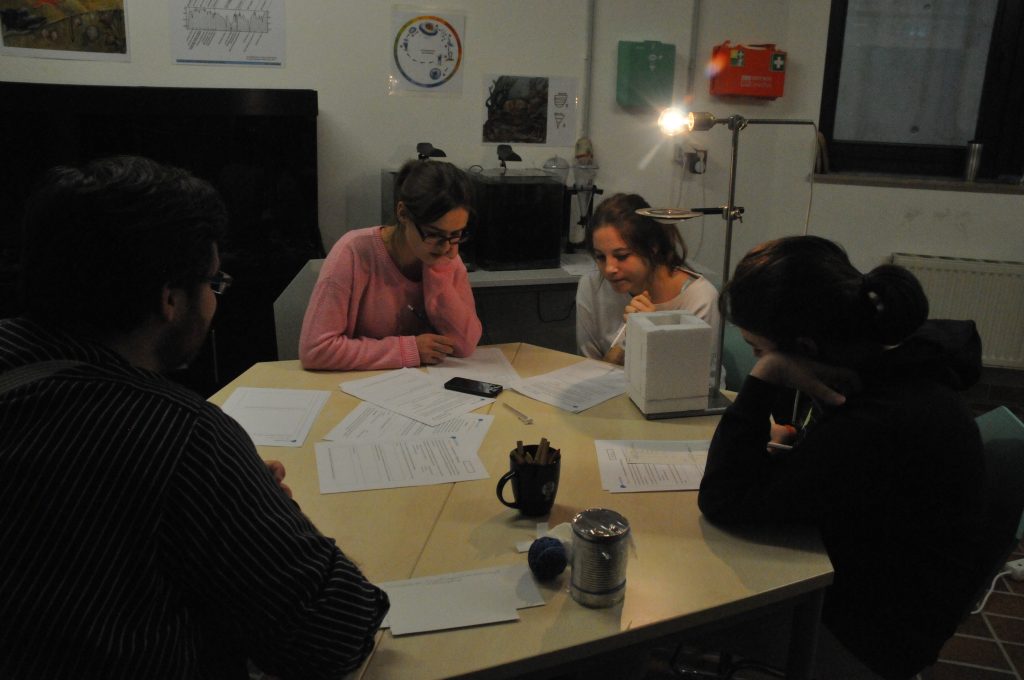
On the table next to the hydrological cycle team, there is Jonas, working on the role of the ocean in the climate system. Below, the students are dunking air-filled bottles into hot and cold water baths to watch how air expands and contracts depending on its temperature.
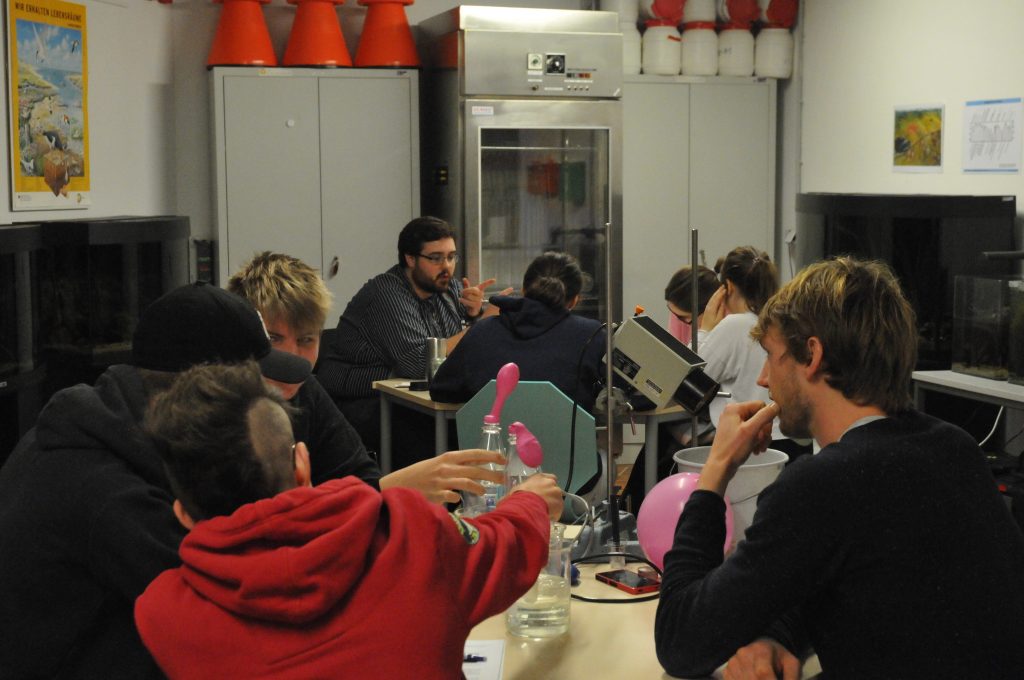
They seem to be having fun!
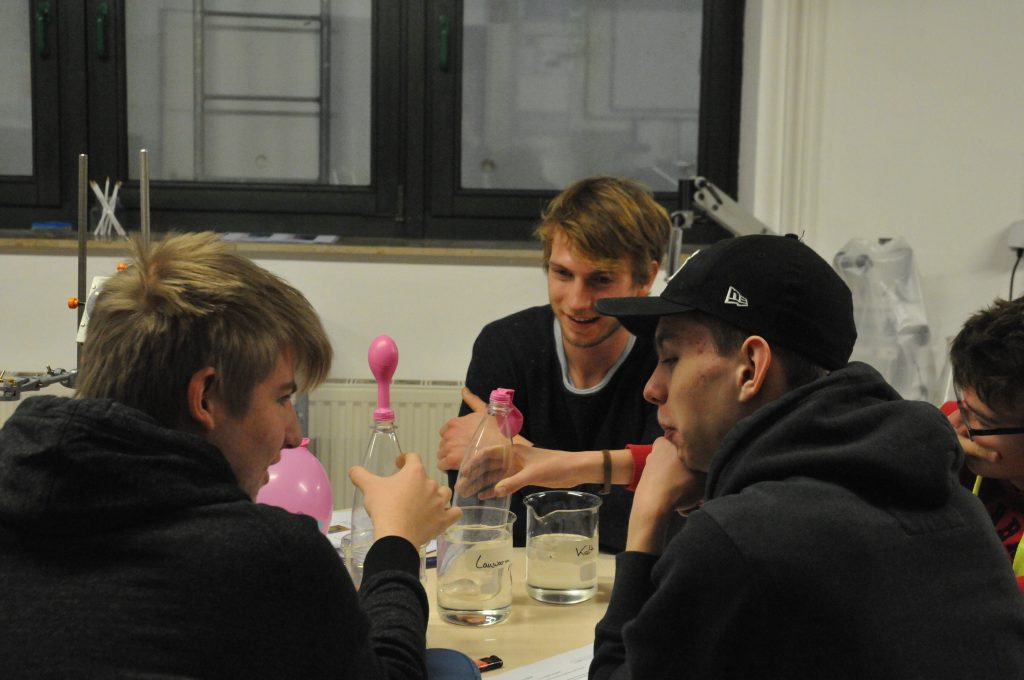
Later, the team at this station did an overturning experiment. I have tons of pictures of that experiment, because it is just super photogenic (or because I am just still fascinated every time I see it, who knows?)
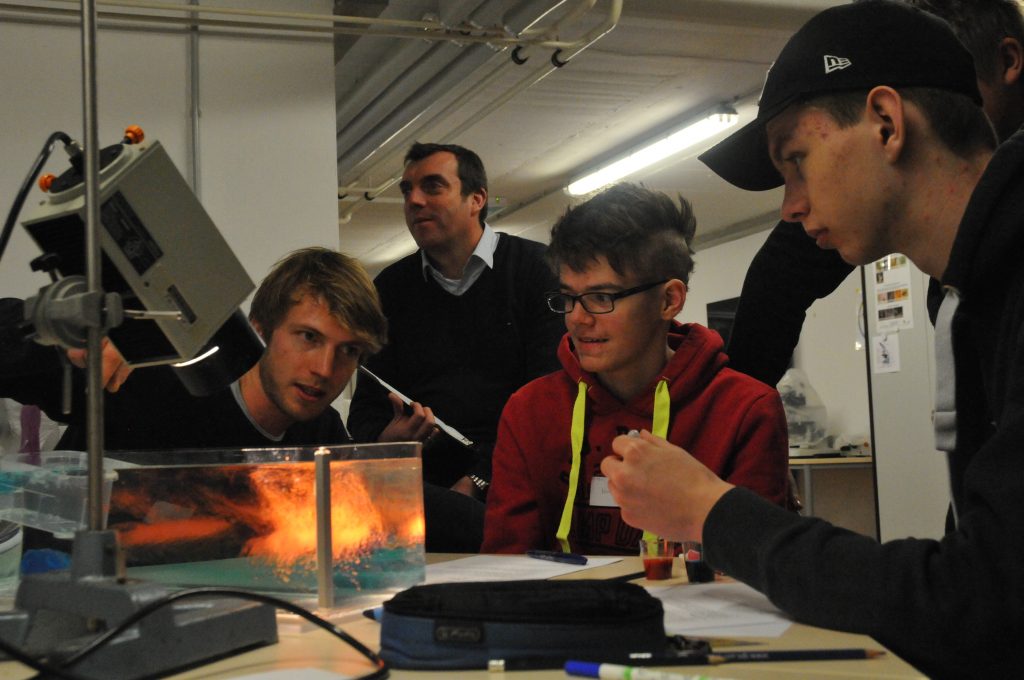
They are using a very strong lamp to model the heating by the sun near the equator, and cold packs to cool near the poles.
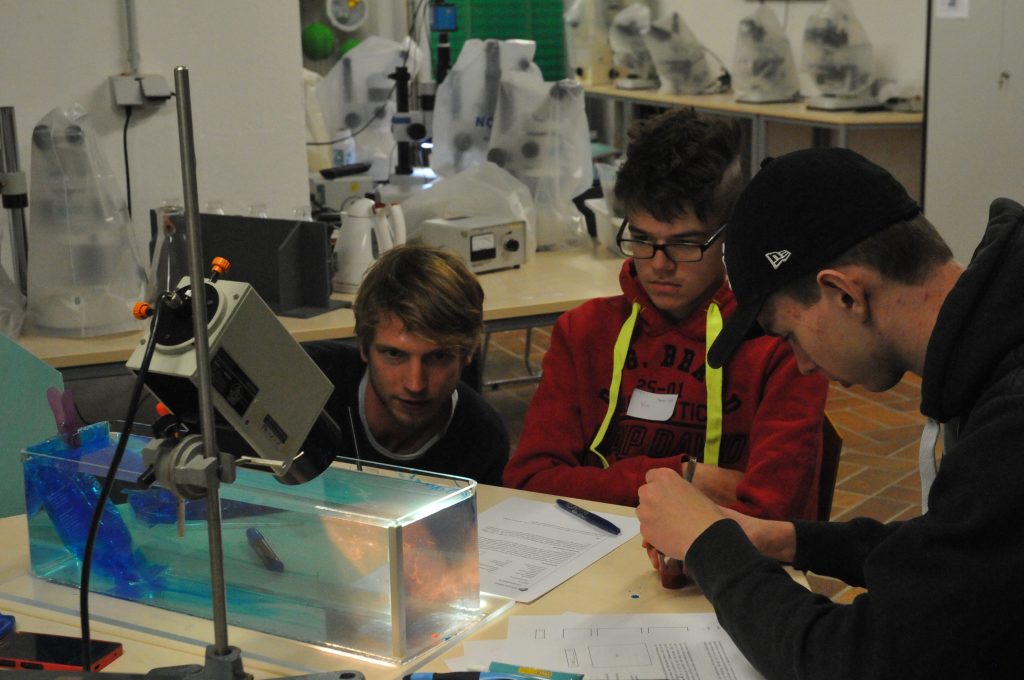
And they seemed to enjoy playing with food dye!
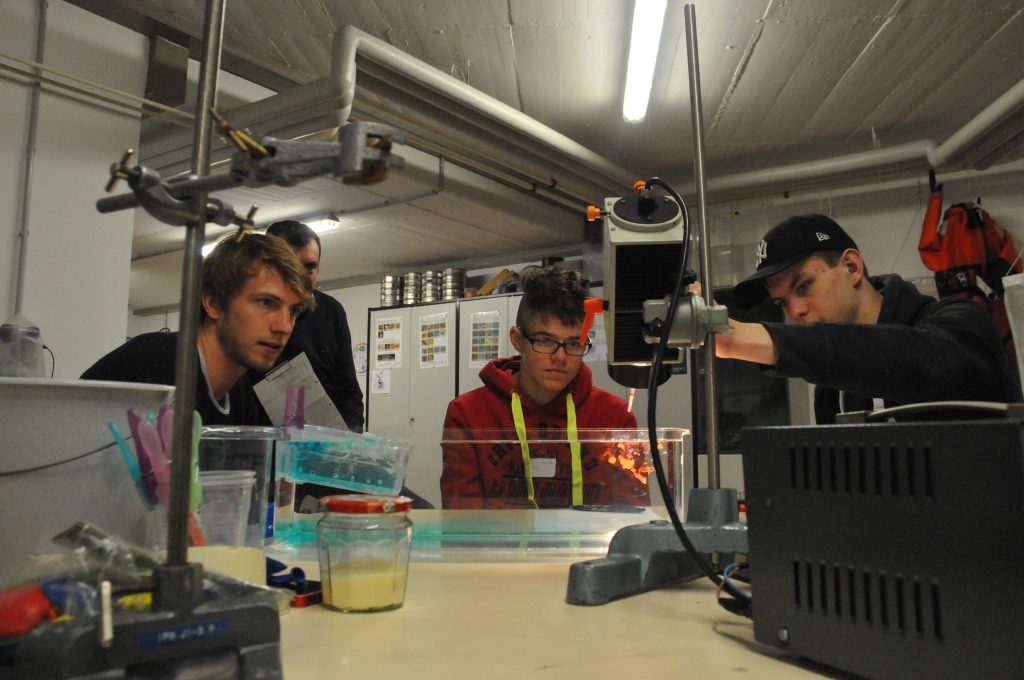
We have two more stations (or three, including the CO2 station I mentioned above), one on clouds run by Nicolas, and one on ice-albedo-feeback run by Henning. Unfortunately I don’t have good pictures of those, either, but I will post pictures of our trial run soon, where they’ll be featured, too.
Let’s close this by looking at how we brought all our new experts back together (because each group only conducted one station, for which they had almost all morning) — by using the Monash Simple Climate Model! I’ve written before about how great it is in teaching (see here), and I am still a big fan!
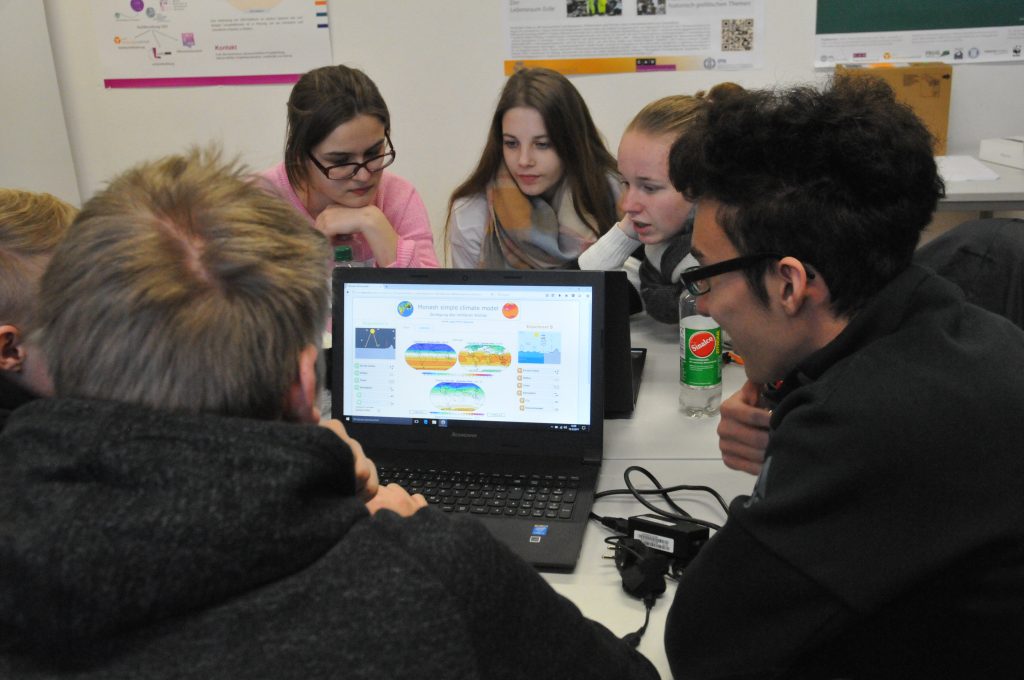
The new “experts” on clouds, the ocean, the hydrological cycle, atmospheric CO2 and ice-albedo feedbacks explained their topics to the rest of their groups. And — surprisingly enough — in the model, you can switch on and off each of these processes individually and see what effect it has on climate!
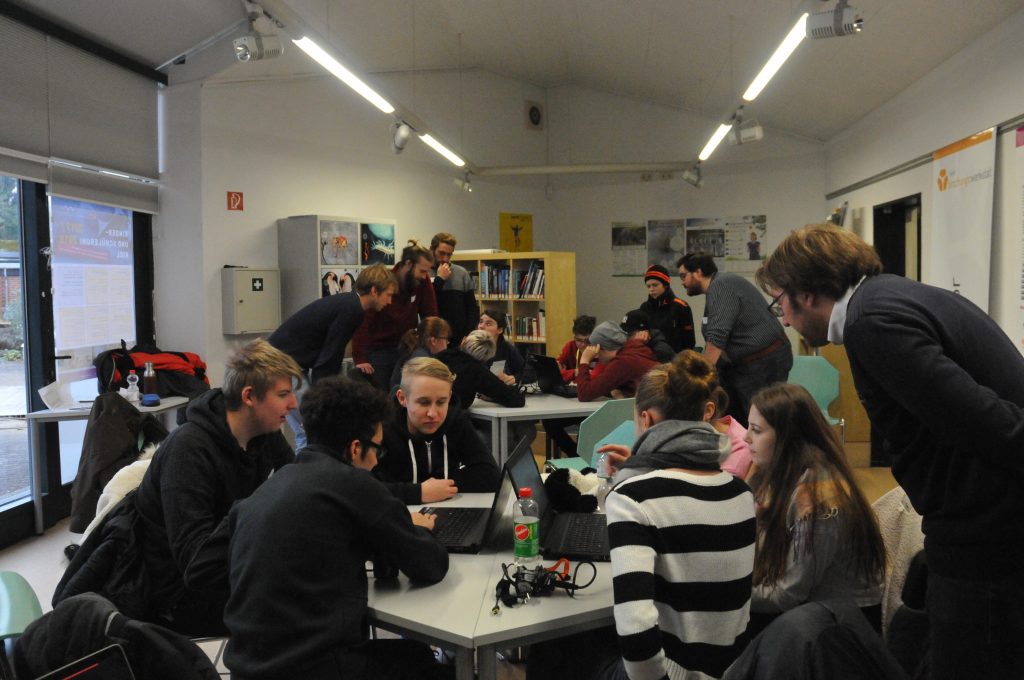
I think this worked really well to engage students in discussions about the processes they had just explored, and how they work together. Although I want to work on the kind of questions that guide them through the model before the next class visits the school lab in January…

But all in all, I am very happy with how the launch went, and I am super grateful to my great team! Thanks, Jonas, Julian, Nicolas, Mirko, and Henning (from the left in the picture above)! Hope you are enjoying your well-deserved weekend!
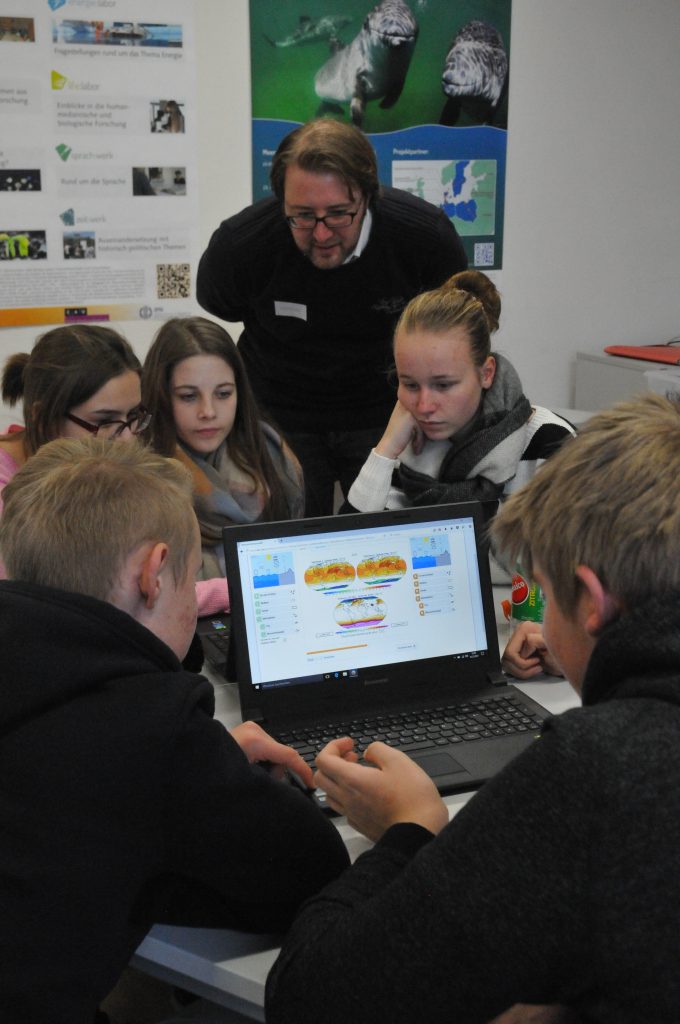
And last not least: Thank you, Frank, for letting us borrow your pupils! They were the nicest group we could have hoped for!
Presenting our new school lab on “energy in the climate system” at a conference – Mirjam S. Glessmer says:
[…] week we’ll be presenting out new lab on energy in the climate system (read more about it here) at a […]
The energy lab’s dry run. Or: I have a great team! :-) – Mirjam S. Glessmer says:
[…] we are looking at Jonas’ overturning experiment, apparently discussing the work sheets. It’s really great how well this team works together […]